Paris Je T’aime
The City of Light is a style tour de force, influencing every design discipline, from fashion to decor and beyond.
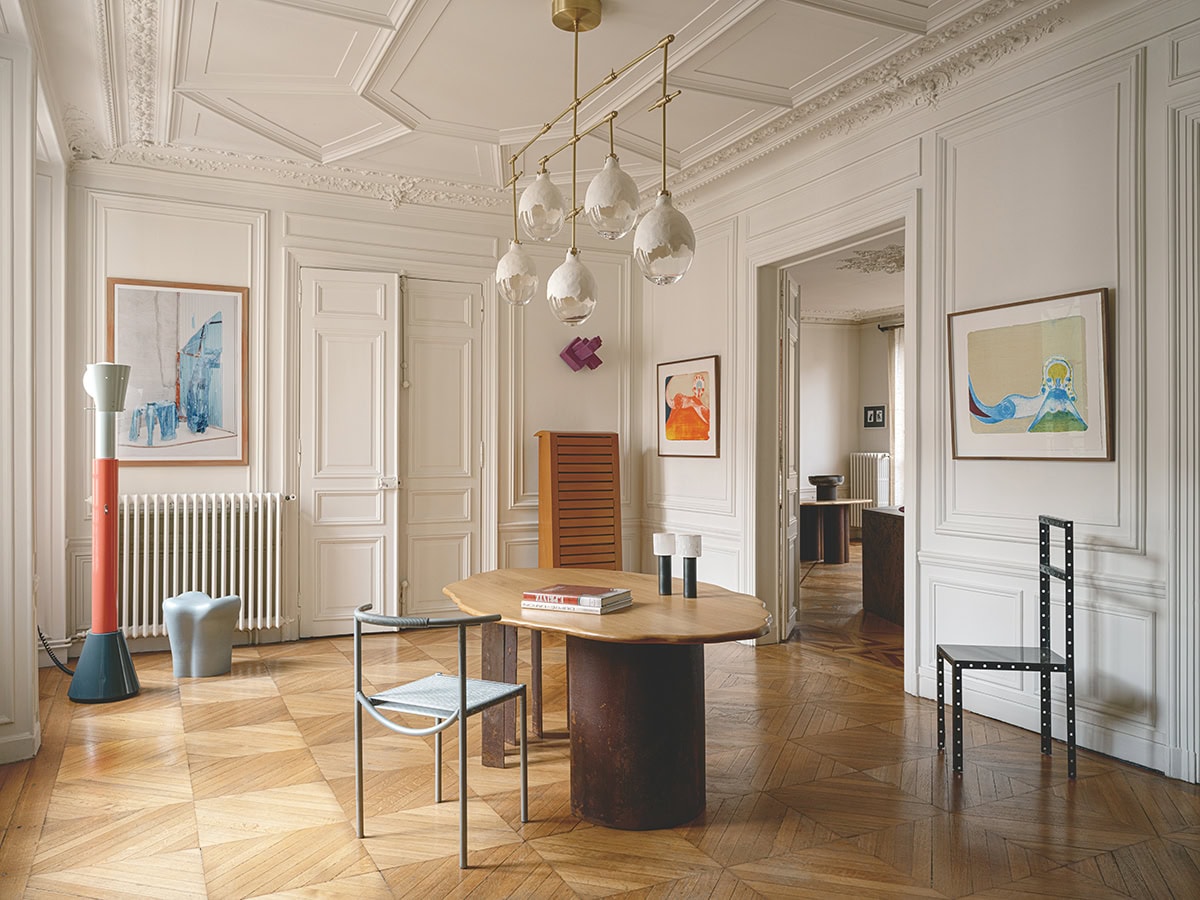
In architect Sophie Dries’s own Paris apartment, the contrast between the classic Haussmannian architecture and modern, even quirky, furnishings is a lesson in creating a fresh, modern look in an historic setting. She says, “People no longer have boundaries about what is a luxury material and what is vernacular. They can have concrete, plaster, piping, metal blinds, in their interior. To me it’s more interesting when those non-aristocratic materials have a dialogue with historical pieces or interiors.”
Photography by Christophe Coënon.
The French know how to live douceur de vivre–the good life. Beautiful forms, shapes and colors are part of everyday living and French homes have an easy, unforced elegance. We see the same style in the way the French dress: their mastery of the basic white T-shirt paired with a classic blazer, then elevated with a Chanel bag. Similarly, with interiors, there are basic pieces such as a linen sofa, but juxtaposed with an unexpected artwork. It seems simple but it’s the interesting combination that gives it a French twist.

La Cornue is known worldwide for its state-of- the-art, beautifully designed ovens, which were introduced in 1908 in Paris, by Albert Dupuy. Designer Ferris Rafauli has collaborated with the brand on a new version of the Château Suprême which includes Art Deco details, redesigned control knobs, and a leather-covered hood. Through Middleby Residential.
The New French city look is not about building a themed shrine to Paris. It’s about creating an authentic space—that looks and feels French- without employing kitsch design cues. Nor are French city interiors just about Paris. There’s the picture-book charm of Lyon, its business district located amid Renaissance-era architecture and a cluster of museums reflecting its industrial heritage. Or the chaotic energy of gritty port city, Marseille, with its abundant cultural influences, smart urban spaces, and walls laden with graffiti.
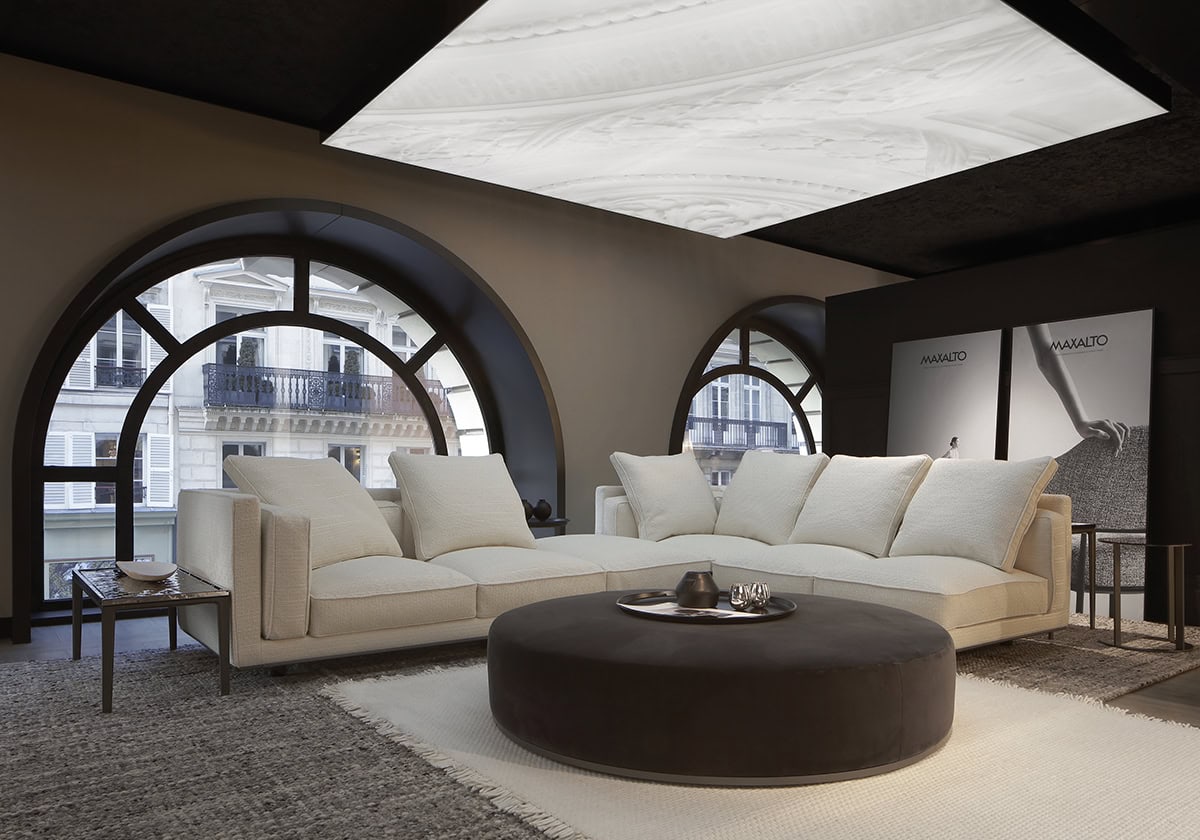
Maxalto debuted it’s new collection, Art of the Unique by Antonio Citterio, in it’s flagship showroom in Paris on the Rue du Bac.
“We’ll always have Paris.”

Left: Artist and designer Alexandre Noll used wood as his sole medium, creating sculptural works and furniture. During a recent exhibit launched by architect Lee Mindel and gallerist Jacque LaCoste—Les Enfants Terribles—at Mindel’s Galerie56, Noll’s work was shown alongside his contemporaries like Jean Royere, Pierre Jeanneret, Antoine Poncet, Charlotte Perriand, le Corbusier, and Serge Mouille. Says Mindel, “Noll is clearly a profound influence in 20th century design. When one experiences a work by Noll it appears to be created by nature itself.”
Center: Though this black and white marble flooring from Paris Ceramics is quarried in Spain, the large square tiles are evocative of iconic Parisian architectural details meant to last for centuries.
Right: Tennis-inspired greens at the Fall-Winter 2024 Lacoste show in Paris.
For apartment dwellers or those living in a small house, the French city style is a rich source of inspiration. A residence on the smaller side doesn’t constrain French flair or their ability to express themselves through their homes.
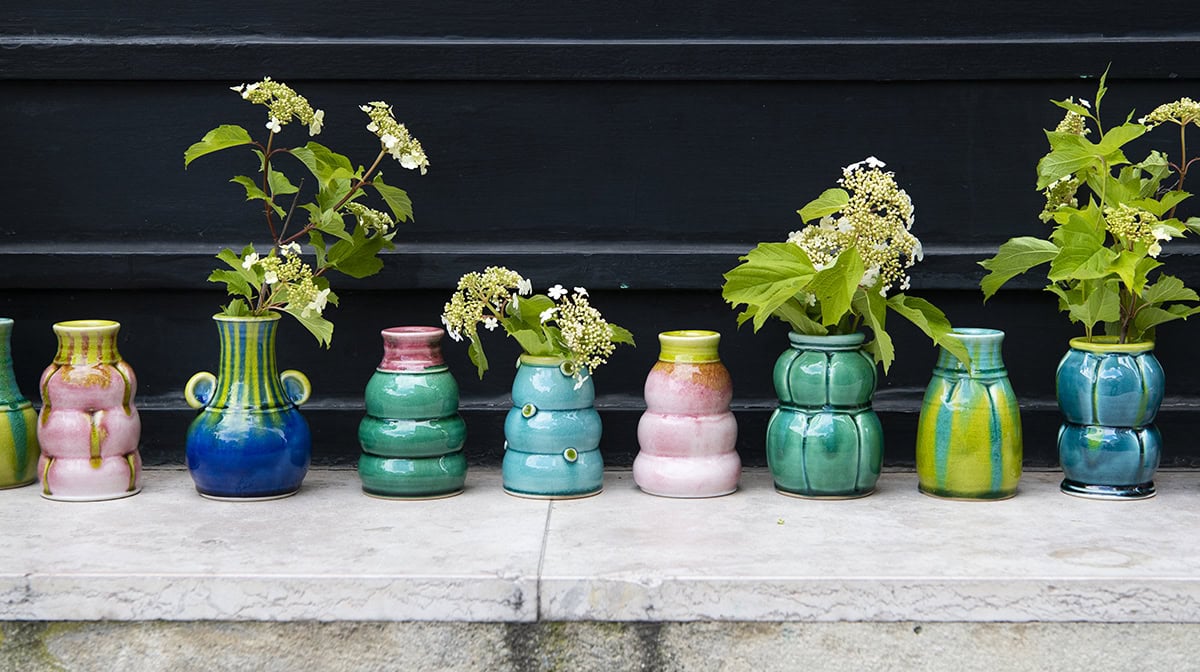
La Tuile à Loup has been a Paris institution since 1974, with the mission of preserving and presenting artisanal and distinctively French ceramics. Eric Goujou, the current proprietor, undertook the stewardship of this important trust in 2006. He explains, “The pieces I select brim with charm, whimsy, rusticity, character, depth, and the keen expressiveness of each creator. Their quality lies in their origins as works of talented artisans, inheritors and keepers of a savoir faire inspired by long tradition. Here is value that cannot be expressed as price, as each piece brings with it a single measure of the soul of the artist; and any one would find its rightful place in a great museum as a penultimate expression of the artistic workmanship and beauty available in the world today.”
Many of those much-admired, classically Parisian apartments were designed by architect Georges-Eugène Haussmann in the mid-19th century. Hausmann was responsible for the massive urban renewal program of the new boulevards, parks, and public works in Paris beginning in the 1850s.
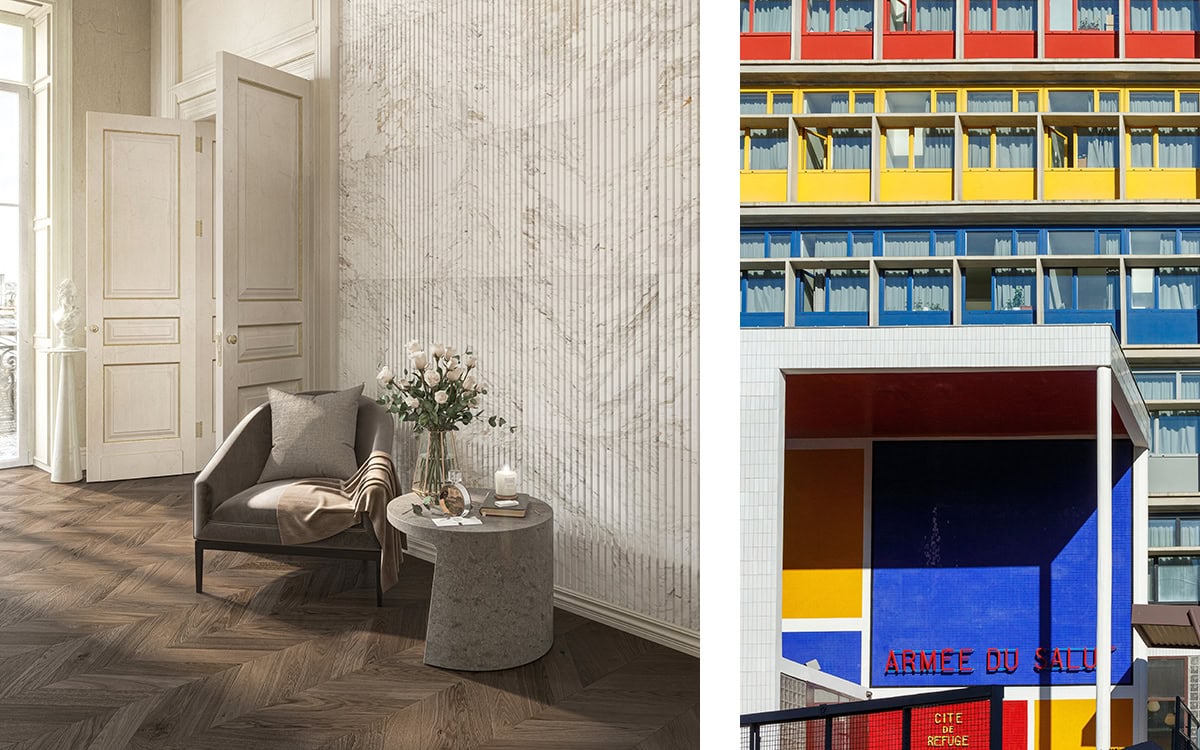
Left: Artistic Tile’s Groove, shown here in Arabescato D’oro, evokes the linear architectural detail of this Haussmannian apartment in Paris.
Right: Le Corbusier and Pierre Jeanneret, part of a creative group known as Les Enfants Terribles, created the primary-colored Cite du Refuge, a building belonging to the Salvation Army in Paris. Photograph by Patrick Escudero/Hemis
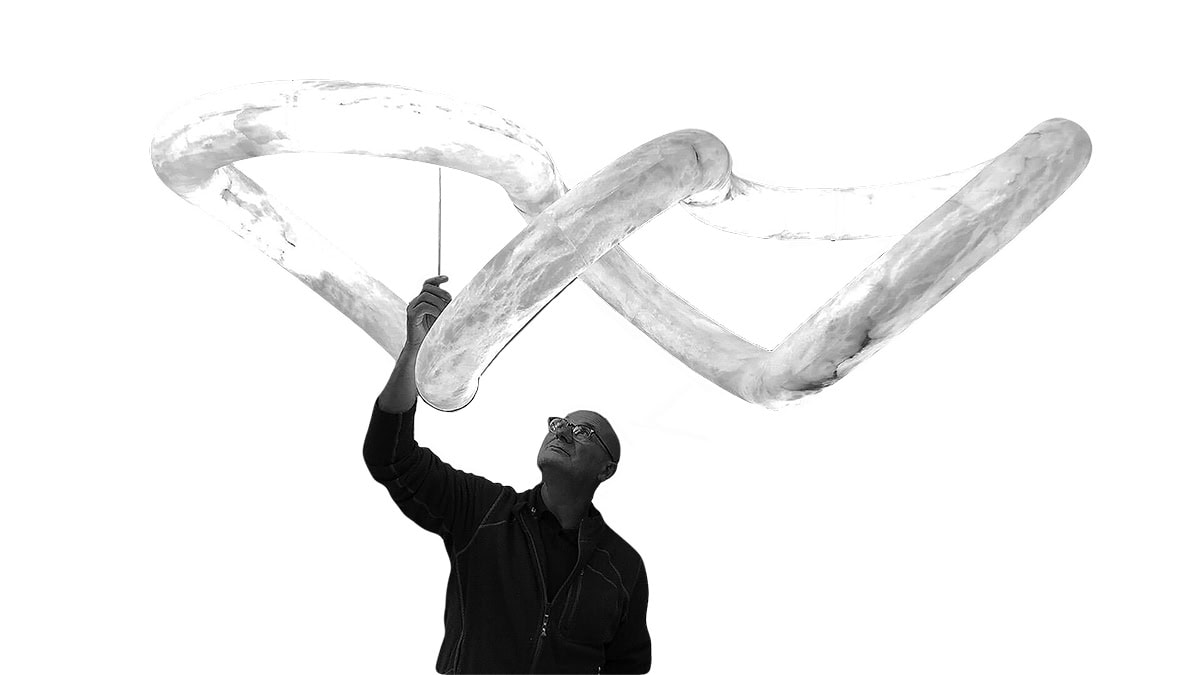
Sculptor Alain Ellouz has mastered the art of working with alabaster, transforming it into glowing works of art in his atelier near Versailles. His minimalist lighting creations are handcrafted with precision, merging the artistry of the sculptor and stoneworker with the latest technology. Through Holly Hunt.
Sought after, low-rise, and known for their creamy limestone facades, zinc roofs, and ornate balconies, internally, Haussmannian apartments possess high ceilings, tall windows and balcony doors, and elaborate moldings. Later apartments built in the Art Nouveau, and Art Deco periods also benefitted from French design regulations of the era that stipulated low-rise buildings and taller ceilings. It’s hard to make a classic Parisian apartment look bad when the bones are so good.
“Fashion is not something that exists in dresses only. Fashion is in the sky, in the street, fashion has to do with ideas, the way we live, what is happening.”
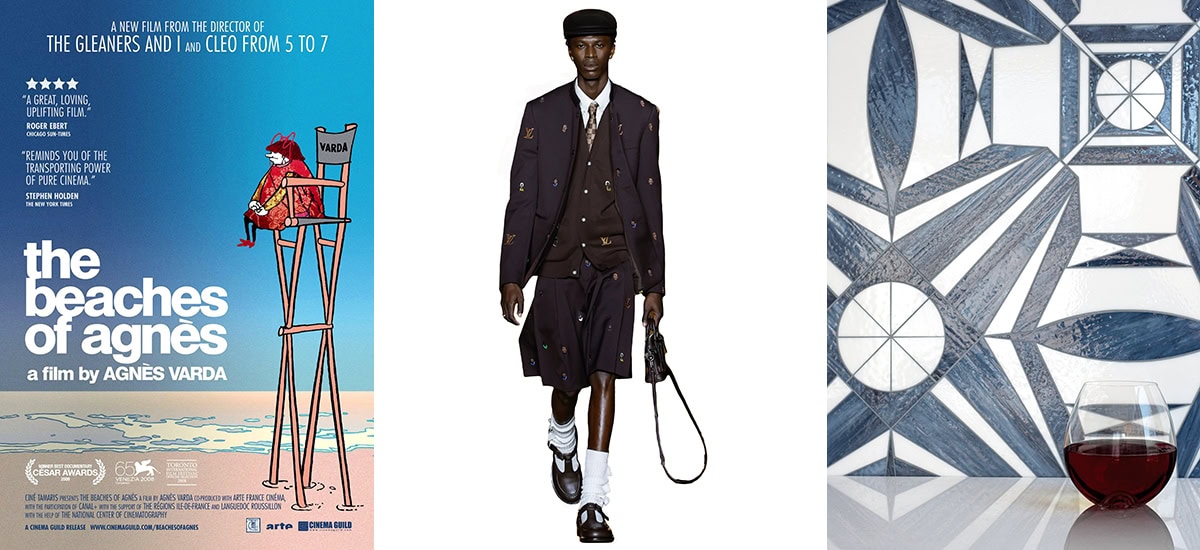
Left: Filmmaker Agnès Varda began her career as a photographer before becoming known as the mother of the French New Wave. Her first film, La Pointe Courte (1955), is considered to be the first film of the movement. Director Martin Scorcese called her “one of the gods of cinema.”
Center: For Spring Summer 2024, Pharrell Williams—in his first collection as men’s creative director of Louis Vuitton—paid homage to the storied brand’s signature Damier checkerboard pattern, reimagining it in a pixilated style. The show took place on the historic Pont Neuf, Paris’s oldest bridge.
Right: Tour Eiffel is just one of the Paris-inspired patterns in New Ravenna’s Ville Lumiére collection, a collaboration with designer Caroline Beaupére, through Studium.

French New Wave actress Jeanne Moreau chats with legendary designer Coco Chanel. Photograph by Collection Christophel
